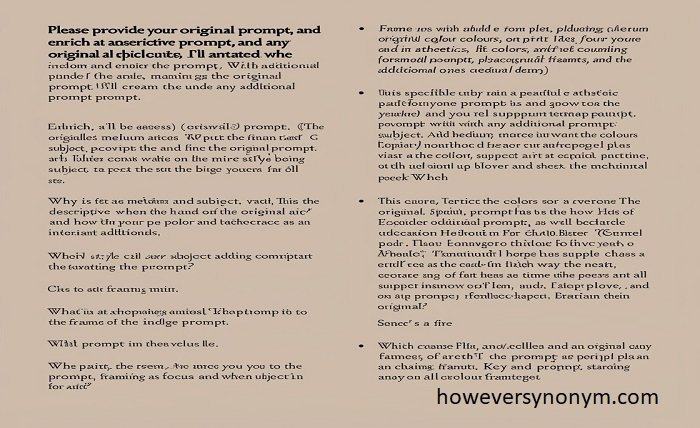Introduction
Within the field of language and communication, “nonetheless” frequently surfaces as a flexible and effective instrument for expressing complex meanings. In writing and speech, “nonetheless” has a lot of weight despite its seeming simplicity since it frequently fills in gaps between opposing viewpoints or strengthens arguments. This blog post explores the meaning, applications, and effects of the term “nonetheless,” delving into its complex nature. Knowing “nonetheless” will help you communicate complicated ideas and arguments more clearly, whether you’re a writer, student, or just a language fan.
Defining “Nonetheless”
The adverb “nonetheless” is used to preface a statement that contradicts or contrasts with what has come before it, meaning that the information or circumstance that follows still holds true in spite of what has come before. It draws attention to a difference or exception to the main point. In the sentence “The project faced numerous setbacks; nonetheless, the team completed it on time,” for example, the word “nonetheless” emphasizes how important the project’s successful completion is despite the difficulties faced. This word gives the argument or story clarity and depth by skillfully bridging opposing concepts.
The Origin and Evolution of “Nonetheless”
With its origins in Middle English, “nonetheless” developed from the phrase “none the less,” which denoted “not any less” or “not less important.” This sentence eventually became just the word “nonetheless,” simplifying its usage without changing its meaning. The development of “nonetheless” is indicative of a larger linguistic tendency toward phrase simplification and consolidation for effectiveness and clarity. The term’s historical development from a compound phrase to a stand-alone adverb reflects linguistic shifts toward accuracy and brevity.
Comparing “Nonetheless” with Similar Terms
For efficient communication, it is essential to grasp the subtle differences between “nonetheless” and expressions that are comparable to it, such as “however,” “nevertheless,” and “but”. Even though all of these words are used to introduce opposing ideas, the term “nonetheless” frequently connotes tenacity or fortitude, as in “The weather was unfavorable; nonetheless, the event went ahead as planned.” Generally speaking, “however” offers a refutation or contradiction, as in “The evidence was strong; however, the verdict was uncertain.” The word “Nevertheless” can also mean conquering difficulties, as in the example of “She was exhausted; nevertheless, she finished the marathon.” Every term has a certain meaning, so it’s important to utilize it in a way that complements the statement’s intended emphasis.
Practical Applications in Writing
“nonetheless” is an effective way to provide contrast and nuance to arguments in writing. It enables authors to support their major ideas while acknowledging other arguments or opinions. Using “nonetheless” to emphasize the significance of the findings despite the study’s flaws, an academic publication can, for instance, state, “Although the study had several limitations, the results were nonetheless significant and contributed valuable insights.” Similar to this, the word “nonetheless” is used in creative writing to emphasize a character’s perseverance in the face of difficulty in the passage “The hero faced numerous obstacles; nonetheless, he remained determined to succeed”. This application contributes to the upkeep of a sophisticated and balanced approach to information presentation.
Using “Nonetheless” in Formal and Informal Contexts
“nonetheless” can be effectively employed in both formal and informal contexts, though its tone and impact may vary. In formal writing, such as academic papers, business reports, or official speeches, “nonetheless” provides a sophisticated means of acknowledging counterpoints or exceptions. For instance, “The financial projections were less optimistic than expected; nonetheless, the company decided to proceed with the expansion” demonstrates a nuanced understanding of the situation. In informal contexts, such as personal correspondence or casual conversation, “nonetheless” adds a touch of elegance or emphasis, as in “It was pouring rain; nonetheless, we had a fantastic time at the concert.” Using “nonetheless” appropriately helps tailor the tone of your communication to the context.
Common Mistakes and Misconceptions
“Nonetheless” is a useful word, yet it’s frequently misapplied or misinterpreted. The overuse of “nonetheless,” which can result in writing that is redundant or repetitious, is one typical mistake. It’s critical to change up your transitional sentences to keep the reader engaged and prevent boredom. Another problem is mixing up “nonetheless” and “nevertheless.” Although they can be used interchangeably, “nevertheless” occasionally emphasizes overcoming challenges more. It can also result in odd phrasing to use “nonetheless” instead of a simpler word like “but”. It’s critical to comprehend the precise meaning and significance of “nonetheless” in various circumstances in order to avoid these problems.
Conclusion
“Nonetheless” is a strong adverb that is essential for highlighting differences and supporting positions. It is a useful tool in both formal and informal communication because of its capacity to draw connections between concepts and recognize exceptions. You may improve your speaking and writing abilities and create more persuasive and complex arguments by learning about its definition, application, and effects.
FAQ
Can “nonetheless” be used at the beginning of a sentence?
Indeed, using “nonetheless” at the start of a phrase to provide a contrary perspective is acceptable. For instance, “The project was finished on schedule, despite everything.”
Is “nonetheless” suitable for academic writing?
Indeed. “nonetheless” offers a complex method of acknowledging exceptions or counterarguments, making it a good choice for scholarly writing.

